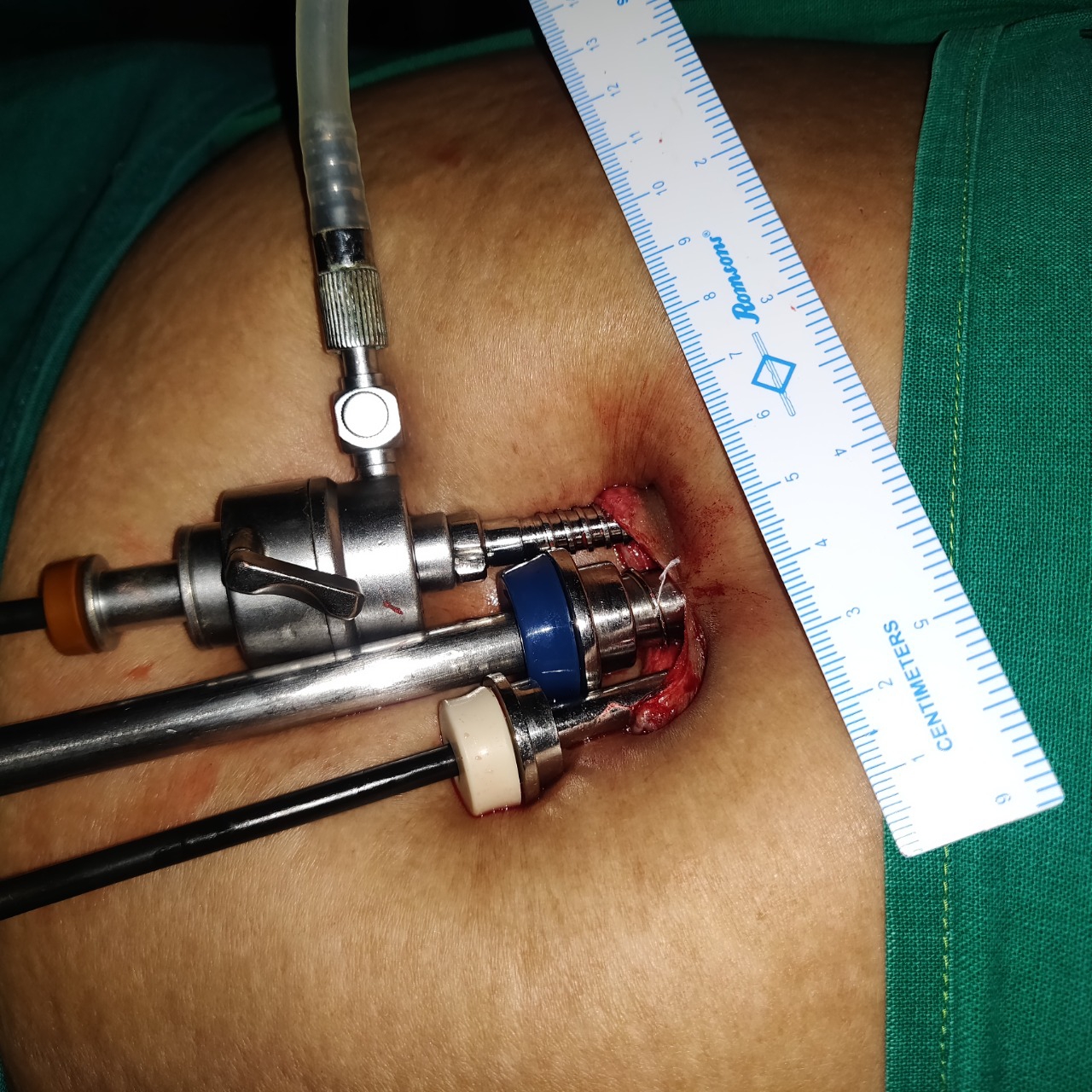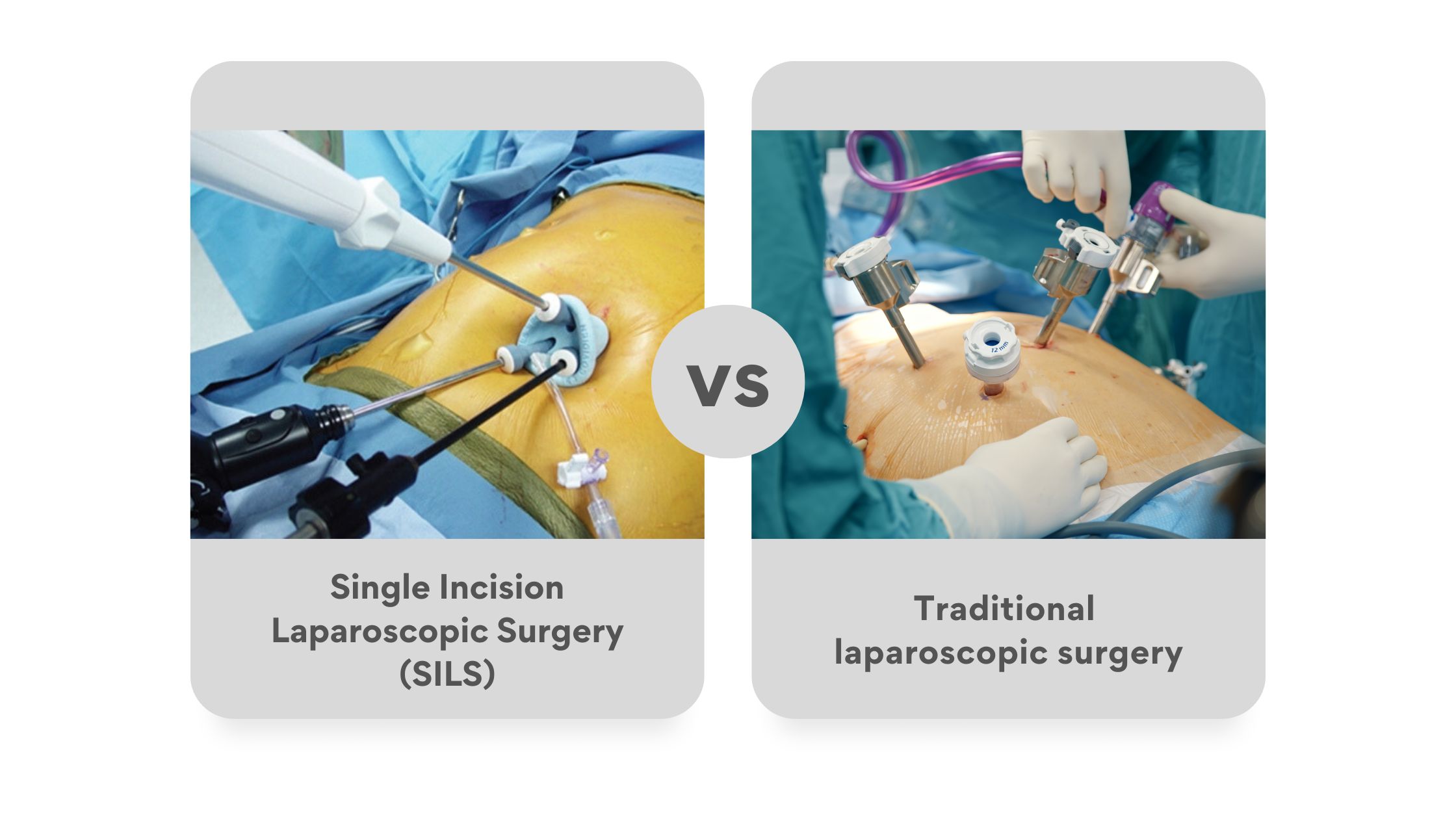

Single Incision Laparoscopic Surgery (SILS) for Minimally Invasive Surgeries
If you’re looking for a less invasive alternative to traditional open or laparoscopic surgery, Single Incision Laparoscopic Surgery (SILS) may be an option to consider. SILS involves making only one small incision in the patient’s abdomen through which a specialised camera and surgical instruments are inserted to perform the surgery. SILS is a minimally invasive technique that offers several benefits over traditional open or laparoscopic surgery, including less postoperative pain, minimal scarring, and a quicker recovery time. Dr. Gautam Nadkarni is a renowned laparoscopic surgeon in Mumbai who offers SILS as an option for eligible patients. If you’re considering laparoscopic surgery in Mumbai, read on to learn more about the differences between SILS and traditional laparoscopic surgery, the key benefits of SILS, and whether it’s suitable for all patients.
What is Single Incision Laparoscopic Surgery (SILS)?
Single Incision Laparoscopic Surgery (SILS) is a surgical technique that uses a single small incision in the patient’s abdomen to perform various procedures. This technique involves using a camera and surgical instruments that are inserted through a single incision to perform the surgery.


Differences between Single Incision Laparoscopic Surgery (SILS) and traditional laparoscopic surgery
- Incisions: SILS requires only one small incision, while traditional laparoscopic surgery requires several small incisions.
- Surgical instruments: In traditional laparoscopic surgery, the surgical instruments are inserted through the multiple small incisions made in the abdomen, while in SILS, specialised instruments are used that are designed to be inserted through a single small incision.
- Invasiveness: SILS is even less invasive than traditional laparoscopic surgery, as it involves making only one small incision, which can result in less postoperative pain, less scarring, and a quicker recovery time for the patient.
- Suitability: SILS is a newer surgical technique and is not suitable for all patients. Patients who have had previous abdominal surgeries or who have certain medical conditions may not be good candidates for SILS.
- Surgeon’s experience: SILS requires specialised skills and training, and not all surgeons may have experience with this technique. It is important to have a skilled surgeon who is experienced in both traditional laparoscopic surgery and SILS to ensure the best possible outcome for the patient.

Operations performed with SILS
SILS can be used to perform a variety of surgical procedures, including-
- Single Incision Laparoscopic Surgery for Gallbladder: This procedure involves removing the gallbladder through a single small incision in the abdomen.
- Single Incision Bariatric Surgery: SILS can be used to perform bariatric surgery, which is a type of weight loss surgery. This procedure involves reducing the size of the stomach to help patients lose weight.
- Single Incision Laparoscopic Appendectomy: This procedure involves removing the appendix through a single small incision in the abdomen.
- Single Incision Gallbladder Surgery: SILS can also be used to perform other types of gallbladder surgery, including gallstone removal or treatment for gallbladder disease.
- Single Incision Laparoscopic Cholecystectomy: This procedure involves removing the gallbladder through a single small incision in the abdomen.
- Single Incision Laparoscopic Hysterectomy: SILS can be used to perform a hysterectomy, which is a surgical procedure to remove the uterus.
- Single Incision Robotic Cholecystectomy: This procedure is similar to a single incision laparoscopic cholecystectomy but is performed using robotic technology.
- Single Incision Sleeve Gastrectomy: This bariatric surgery procedure involves removing a large portion of the stomach to help patients lose weight.
Key benefits of Single Incision Laparoscopic Surgery
- Less postoperative pain: Because SILS involves making only one small incision, there is less trauma to the body, resulting in less postoperative pain for the patient.
- Quicker recovery time: Because SILS is a minimally invasive technique, patients can usually return to their normal activities more quickly than with traditional open or laparoscopic surgery.
- Minimal scarring: SILS involves making only one small incision, resulting in minimal scarring compared to traditional open or laparoscopic surgery.
- Reduced risk of infection: Because SILS is a minimally invasive technique, there is less exposure of the surgical site to outside contaminants, resulting in a reduced risk of infection.
- Better cosmetic outcomes: The single incision made in SILS is often located in a less visible area, resulting in a better cosmetic outcome for the patient.
- Reduced length of hospital stay: Because SILS is associated with less postoperative pain and a quicker recovery time, patients may be able to go home from the hospital sooner than with traditional open or laparoscopic surgery.
Risks factors of Single Incision Laparoscopic Surgery (SILS)
- Limited instrument movement: Because SILS involves using specialised instruments that are inserted through a single small incision, the surgeon’s movements may be more limited than with traditional laparoscopic surgery, potentially leading to longer operative times.
- Higher cost: SILS may be more expensive than traditional laparoscopic surgery due to the specialised instruments and additional training required.
- Limited surgeon experience: SILS requires specialised skills and training, and not all surgeons may have experience with this technique. It is important to have a skilled surgeon who is experienced in both traditional laparoscopic surgery and SILS to ensure the best possible outcome for the patient.
- Conversion to open surgery: If the surgeon encounters any difficulties during the procedure or if the patient’s anatomy is not suitable for SILS, the surgeon may need to convert to traditional laparoscopic surgery or open surgery to complete the procedure safely and effectively.
Can SILS be offered to all patients?
While SILS is a promising technique, it may not be suitable for all patients. Patients with certain medical conditions or who have had previous abdominal surgeries may not be good candidates for SILS. The decision to offer SILS should be made on a case-by-case basis after evaluating the patient’s medical history and individual case.
What happens if an operation cannot be completed by SILS?
If the surgeon encounters any difficulties during the procedure or if the patient’s anatomy is not suitable for SILS, the surgeon may need to convert to traditional laparoscopic surgery or open surgery to complete the procedure safely and effectively. It’s essential to have a skilled surgeon who is experienced in both traditional laparoscopic surgery and SILS to ensure the best possible outcome for the patient.
If you are searching for a Laparoscopic specialist doctor in Chembur, Santacruz, Sion, Mumbai or any nearby location in Mumbai then look no further than the most experienced and renowned Laparoscopic specialist surgeon in Mumbai Dr. Gatuam Nadkarni.
Frequently asked Questions and Answers
Single Incision Laparoscopic Surgery (SILS) is a surgical technique that involves making only one small incision in the patient’s abdomen to perform various procedures. This technique uses a camera and specialised surgical instruments that are inserted through a single incision to perform the surgery.
SILS requires only one small incision, while traditional laparoscopic surgery requires several small incisions. In traditional laparoscopic surgery, the surgical instruments are inserted through the multiple small incisions made in the abdomen, while in SILS, specialised instruments are used that are designed to be inserted through a single small incision. SILS is even less invasive than traditional laparoscopic surgery, resulting in less postoperative pain, less scarring, and a quicker recovery time for the patient.
SILS offers several benefits over traditional laparoscopic surgery, including less postoperative pain, minimal scarring, a quicker recovery time, a reduced risk of infection, better cosmetic outcomes, and a reduced length of hospital stay.
While SILS is a promising technique, it may not be suitable for all patients. Patients with certain medical conditions or who have had previous abdominal surgeries may not be good candidates for SILS. The decision to offer SILS should be made on a case-by-case basis after evaluating the patient’s medical history and individual case.
If the surgeon encounters any difficulties during the procedure or if the patient’s anatomy is not suitable for SILS, the surgeon may need to convert to traditional laparoscopic surgery or open surgery to complete the procedure safely and effectively. It’s essential to have a skilled surgeon who is experienced in both traditional laparoscopic surgery and SILS to ensure the best possible outcome for the patient.
The recovery time for SILS varies depending on the type and complexity of the surgery performed. However, in general, SILS is associated with a quicker recovery time than traditional open or laparoscopic surgery. Patients can usually return to their normal activities within a few days to a few weeks after the procedure, depending on their individual case. It’s important to follow your surgeon’s postoperative instructions carefully to ensure the best possible outcome and a smooth recovery.
The length of time for SILS surgery varies depending on the type and complexity of the procedure. However, in general, SILS can be performed in about the same amount of time as traditional laparoscopic surgery. It’s important to discuss the expected length of the surgery with your surgeon before the procedure so that you can plan accordingly.
Like all surgeries, SILS carries some potential risks, including bleeding, infection, and injury to surrounding organs. However, the risks associated with SILS are generally low, especially when the surgery is performed by an experienced and skilled surgeon. It’s important to discuss the potential risks and benefits of SILS with your surgeon before the procedure to ensure that you are making an informed decision.
Whether SILS is a suitable option for your individual case will depend on a thorough evaluation by a qualified surgeon. Factors that may affect your suitability for SILS include your medical history, overall health, body mass index (BMI), and the type and complexity of the surgery required. Patients who have had previous abdominal surgeries or who have certain medical conditions may not be good candidates for SILS. It’s important to discuss your options with a qualified surgeon to determine which approach is best suited to your individual case.
SILS involves making only one small incision, resulting in minimal scarring compared to traditional open or laparoscopic surgery. The single incision made in SILS is often located in a less visible area, resulting in a better cosmetic outcome for the patient.

